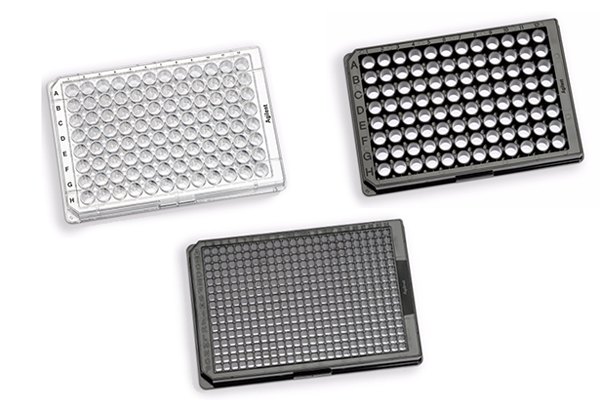
Agilent's cell culture and imaging microplates provide multiple highly sought after features when looking for a high quality imaging plate, including:
- 96- and 384-well configurations
- Flat bottom wells
- Black wall plates contain coverslip (190 µm) thin optically clear well bottom
All plate definitions are also pre-defined in Bravo and BioTek Gen5 software to ensure the best quality and ease-of-use can be achieved for all cellular imaging applications.